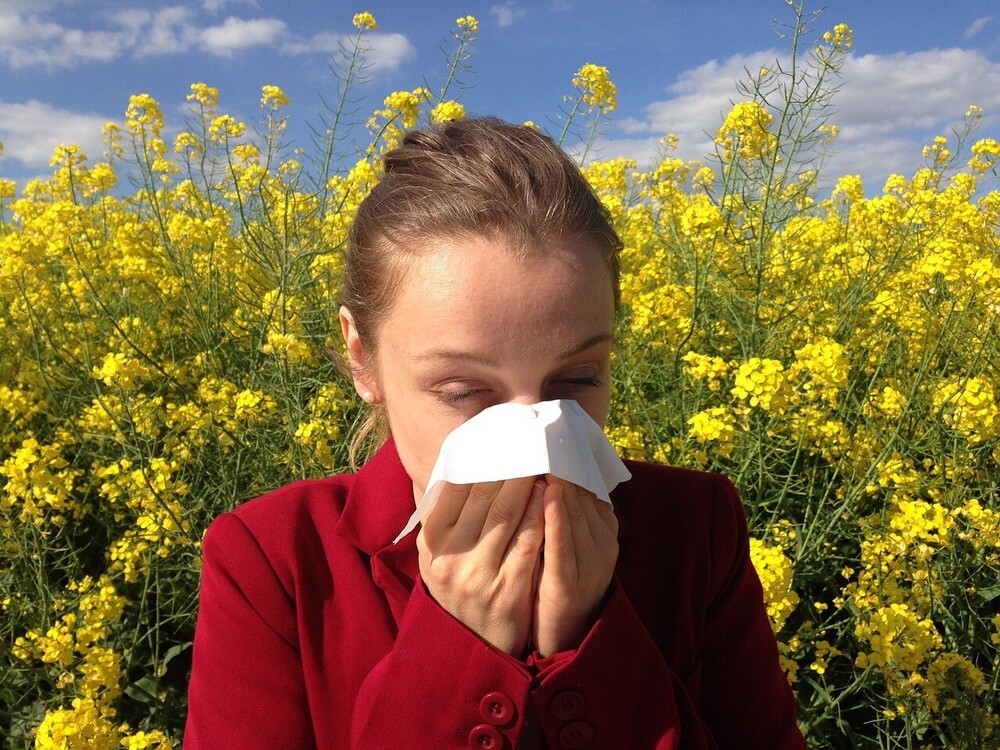Hay Fever is Not To Be Sneezed At!

posted 30th May 2024

For over 40% of the population, Spring brings with it the dreaded symptoms of hay fever. These can include itchy eyes, sneezing, skin rashes and a stuffy nose. It occurs when our immune system overreacts to allergens including pollen.
Recent research has suggested there could be a link between hay fever and the microbiome. This is the collection of microorganisms that live in and on our bodies. The gut and nasal microbiomes are specifically involved in the development and management of hay fever symptoms. In this article, we look at ways to support our microbiome to help reduce the effects of hay fever on daily life and reduce dependence on anti histamine medications which can have side effects including drowsiness, lack of coordination, blurred vision and a dry mouth.
Hay Fever and the Gut Microbiome
Research studies have found that people with hay fever often have a less diverse gut microbiome compared to those without hay fever. In other words, they have fewer variations of microbial species in the gut. This can lead to an imbalance of the gut microbiome or ‘dysbiosis’ which in turn leads to higher levels of chronic inflammation in the body. Increased inflammation can make the immune system more sensitive to irritants, such as allergens. In addition, our gut microbiome is responsible for producing short-chain fatty acids which are known to have anti-inflammatory properties. Certain species of gut bacteria such as Bifidobacterium and Lactobaccillus are effective producers of these short-chain fatty acids and low levels of these are associated with an increased risk of hay fever.
Hay Fever and the Nasal Microbiome
In addition to the gut microbiome, hay fever also seems linked to the nasal microbiome. This is the community of microorganisms which inhabit the nasal passages. Just like in the gut, the nasal microbiome plays an important role in regulating the immune system and protecting against harmful pathogens that enter our bodies through our nose. Imbalance and reduced diversity of the nasal microbiome can lead to an increased risk of respiratory infections and hay fever symptoms. Research has shown that people with hay fever have a different composition of their nasal microbiome with a higher abundance of more pathogenic bacteria such as Staphylococcus aureus.
Supporting the Microbiome
If you suffer with hay fever symptoms, it may well be worth supporting your microbiome with prebiotics and even probiotics. Prebiotics are fibres which feed beneficial bacteria in the gut. Essentially, good bacteria feed on prebiotics. Probiotics are live organisms which enhance the composition of good bacteria in the body. Certain probiotics appear to modulate the immune response and decrease the production of inflammatory cytokines. These are signalling molecules produced by the immune system which promote inflammation. A diet rich in a diverse range of plant based fibres provide the gut microbiome with prebiotics. Onions, garlic, asparagus and artichokes are particularly beneficial. Probiotic rich foods include fermented foods such as kombucha, kefir, kimchi and sauerkraut. These foods are excellent at booting your beneficial bacteria in your gut.
Testing the Gut Microbiome
Private stool testing is available to test the composition of the gut microbiome. This can give a specific insight into the abundances of beneficial bacteria and the presence of more pathogenic strains which could be adding to inflammation. A specific nutrition and supplement protocol can then be used to address these imbalances, reduce overall levels of inflammation and subsequently manage hay fever in a natural and holistic way. Reducing the inflammatory response will have many wider health benefits too. You can find out more about Medicinal Eating Gut Health and Microbiome Testing Packages here.
For further information about a Nutritional Therapy consultation please contact Medicinal Eating or email Janine at info@medicinaleating.co.uk.


